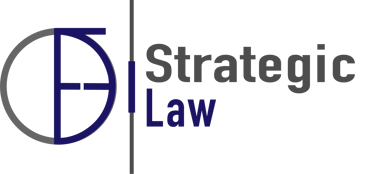Comparative Analysis: The New LFPIORPI vs. the Federal Fiscal Code
Which Standard Prevails in the Identification of the Beneficial Owner? This reform brings Mexico’s anti-money laundering law into closer alignment with international standards and the stricter regulatory framework of the Federal Fiscal Code (CFF). Below, we break down the changes and analyze how the new definition compares with the fiscal framework.


The New Definition: Before and After the July 2025 Reform
The reform clearly reflects an effort to clarify and strengthen the concept of the beneficial owner. The following comparative overview highlights the key differences between the previous version of the law and the newly reformed text.
The recent reform to the Federal Law for the Prevention and Identification of Transactions Involving Illicit Proceeds (LFPIORPI), published in July 2025, introduces significant changes to the definition and scope of the beneficial owner. Here is a summary of the main changes compared to the previous version:
1. Nature of the Subject
Before the reform, the law vaguely referred to a “person or group of persons” without specifying legal personality.
After the reform, only natural persons can be considered beneficial owners, thereby eliminating ambiguity and excluding collective or impersonal legal figures.
2. Method of Obtaining the Benefit
Previously, the benefit could be obtained “through another person or any act.”
Now, the benefit must be obtained directly or through a client or user involved in vulnerable activities. This clarification tightens the link between the beneficial owner and the person engaging in regulated operations.
3. Purpose of the Benefit
Before the reform, the law referred to the benefit and the exercise of rights over goods or services.
The reform specifies that the benefit may consist of the enjoyment, use, exploitation, or disposal of goods or services resulting from vulnerable transactions—clearly indicating a direct material gain related to those activities.
4. Exercise of Control
Previously, control was understood to be exercised over legal entities acting as clients or users.
The reform strengthens this by establishing the need for ultimate effective control over such entities, in line with international standards on tax transparency and anti-money laundering.
5. Control Criteria
Before the reform, control was presumed under the following conditions:
a) The ability to impose decisions,
b) Voting rights exceeding 50% of capital, and
c) Direction of management.
After the reform, these criteria remain, but the capital threshold is lowered from 50% to 25%, aligning Mexico’s legislation with the standards of the Financial Action Task Force (FATF).
6. Supplementary Regulations
One of the most important additions is the ability for authorities to issue secondary provisions through General Rules, allowing regulatory adaptation to technological, financial, and operational changes in the global economy.
Comparative Analysis: The New LFPIORPI vs. the Federal Fiscal Code
While the LFPIORPI reform marks a significant step forward in corporate transparency in Mexico, the Federal Fiscal Code (CFF) still enforces the broadest, most detailed, and strictest standards for defining and handling the beneficial owner.
This comparative analysis outlines the key similarities and differences between both regulations, with practical implications for obligated entities across all sectors.
1. Nature of the Subject
LFPIORPI 2025: Natural person or group of natural persons
CFF: Natural person or group of natural persons
🔍 Both laws agree on restricting the status of beneficial owner exclusively to natural persons, explicitly excluding legal entities.
2. Method of Obtaining the Benefit
LFPIORPI 2025: Directly or through a client or user engaged in a Vulnerable Activity
CFF: Directly, indirectly, or contingently, through any legal act in legal entities, trusts, or other structures
🔍 The CFF offers a broader and more complex framework, including legal structures such as trusts and contingent control mechanisms. In contrast, LFPIORPI is limited to vulnerable activity contexts.
3. Relation to Acts or Transactions
LFPIORPI 2025: Applicable only within the context of regulated Vulnerable Activities
CFF: Applicable to any legal structure with fiscal implications
🔍 The CFF has a general scope, while LFPIORPI retains a sector-specific approach. As such, CFF compliance requires broader oversight, even beyond anti-money laundering obligations.
4. Exercise of Control
LFPIORPI 2025: Ultimate effective control over the client or user involved in vulnerable activities
CFF: Direct, indirect, or contingent control over legal entities, trusts, or similar structures
🔍 The CFF explicitly recognizes contingent control, expanding interpretive flexibility and granting tax authorities greater scope of action.
5. Control Criteria
LFPIORPI 2025:
i) Power to impose decisions;
ii) Ownership of more than 25% of capital;
iii) Management control.
CFF:
i) Power to impose decisions;
ii) Voting rights exceeding 15% of capital;
iii) Management control.
🔍 A key difference lies in the ownership threshold: 25% under LFPIORPI vs. 15% under the CFF, making the tax regulation stricter and more demanding.
6. Supplementary Provisions
LFPIORPI 2025: Subject to General Rules issued by the FIU (Financial Intelligence Unit)
CFF: Subject to SAT rules and aligned with FATF and OECD Global Forum recommendations
🔍 While both allow for secondary rules, the CFF explicitly incorporates international standards, giving it greater normative weight and compliance relevance.
A Shared Objective, Two Different Standards
Although both frameworks aim to identify the natural persons who exercise effective control and enjoy economic benefits from legal structures, the analysis confirms that the Federal Fiscal Code is broader, more technical, and more stringent.
The proposed reform to the LFPIORPI in 2025 seeks to align Mexico’s anti-money laundering framework with international fiscal transparency standards. By defining the beneficial owner more precisely, it strengthens the country’s tools to combat money laundering. However, despite this improvement, the CFF remains the most demanding regulation for companies operating in Mexico.
References
Federal Fiscal Code, last amended and published in the Official Gazette (DOF) on November 12, 2021. Amounts updated through the Miscellaneous Fiscal Resolution published on December 30, 2024.
https://www.diputados.gob.mx/LeyesBiblio/ref/cff.htmDecree amending various provisions of the Federal Law for the Prevention and Identification of Transactions Involving Illicit Proceeds and Article 400 Bis of the Federal Penal Code, published in the Official Gazette on July 16, 2025.
https://www.dof.gob.mx/nota_detalle.php?codigo=5763161&fecha=16/07/2025#gsc.tab=0Federal Law for the Prevention and Identification of Transactions Involving Illicit Proceeds, last amended on May 20, 2021.
https://www.diputados.gob.mx/LeyesBiblio/ref/lfpiorpi.htm
